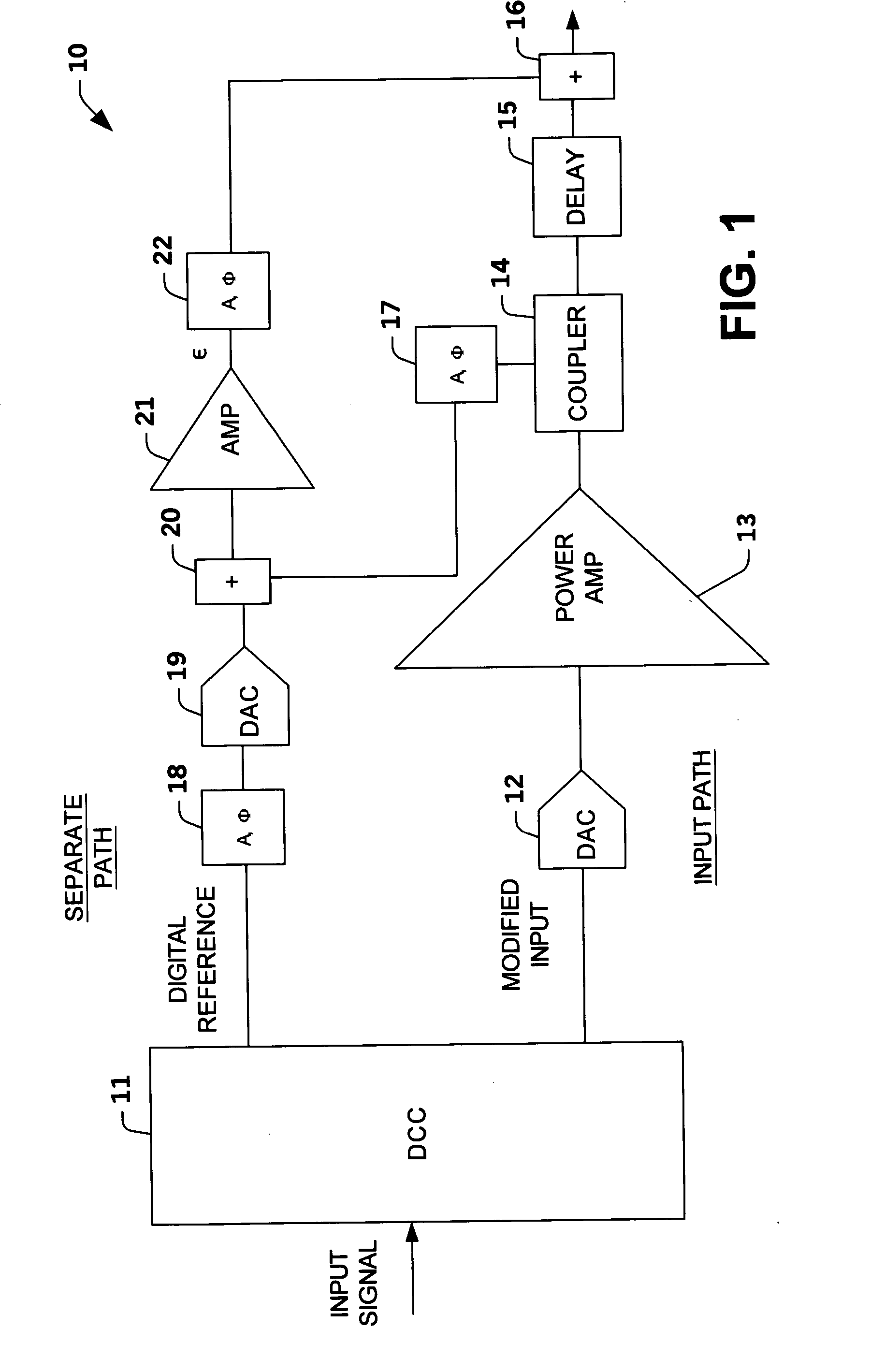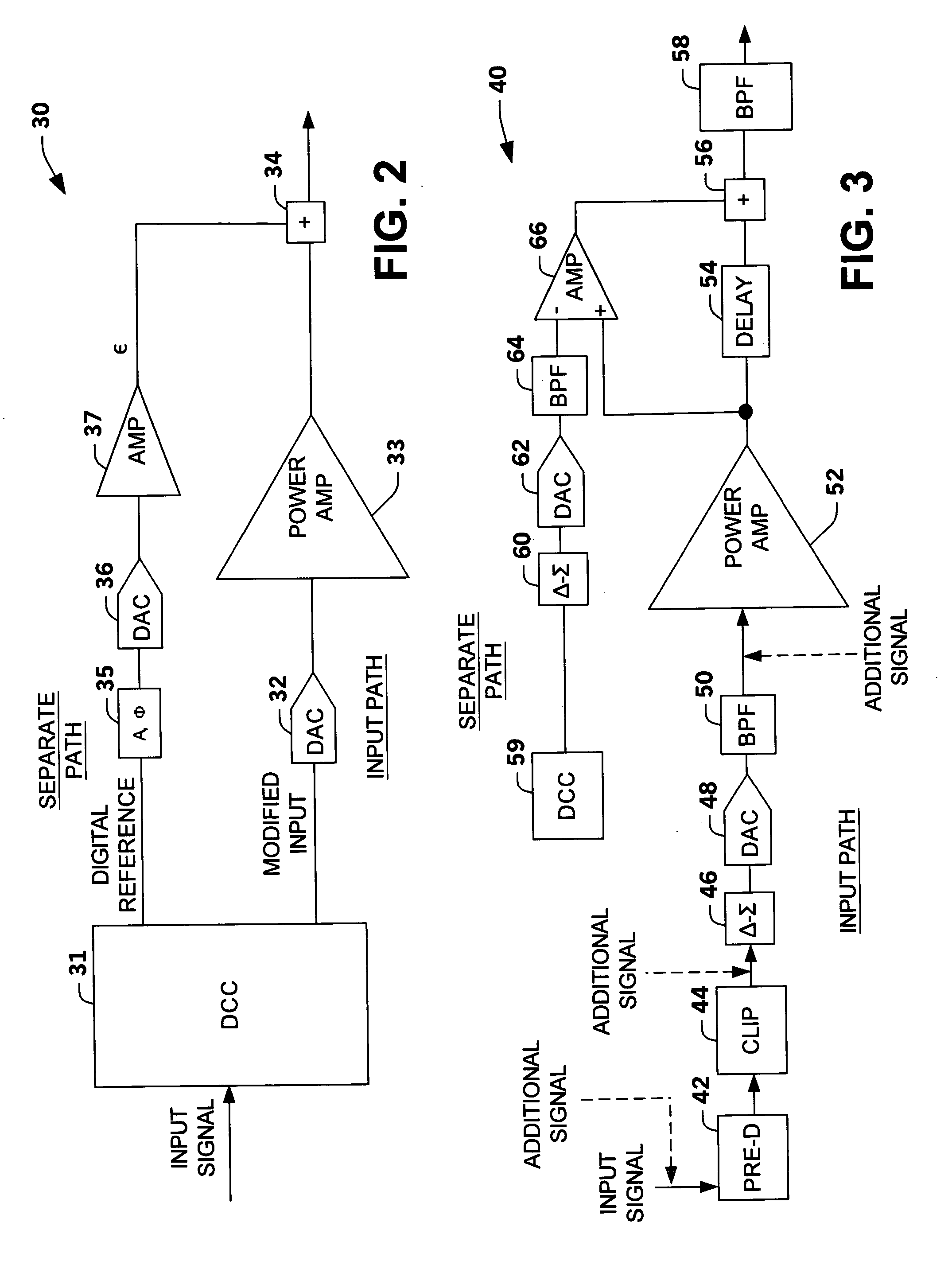Digital cross cancellation system
a cross-cancellation and digital technology, applied in the field of electronic devices, can solve the problems of inefficient linear amplifier operation in these types of signals, general non-operation at high efficiency, and additional challenges, and achieve the effect of reducing oob emissions and reducing peak signal levels
- Summary
- Abstract
- Description
- Claims
- Application Information
AI Technical Summary
Benefits of technology
Problems solved by technology
Method used
Image
Examples
Embodiment Construction
[0023] The present invention relates to an amplification system and method that employs a digital cross-cancellation technique. The digital cross-cancellation technique supplies one or more separate reference signals to be combined with the output of the main amplifier prior to transmission. The separate reference signals enable reduced peak signal levels, correct distortion from the main amplifier signal chain, and cancel significant portions of OOB emissions. Cancellation of OOB emissions can be accomplished by predicting and / or supplying the appropriate signals to the separate path, or by generating an undistorted or “clean” version of the wanted signal from which the error or unwanted signals are electronically derived.
[0024] Signal distortion and OOB emissions result from a number of sources including non-linearity in amplifiers, DACs, as well as from limiting or clipping of signals. When considering systems that split wanted signals into two or more components, such as polar ...
PUM
 Login to View More
Login to View More Abstract
Description
Claims
Application Information
 Login to View More
Login to View More - R&D
- Intellectual Property
- Life Sciences
- Materials
- Tech Scout
- Unparalleled Data Quality
- Higher Quality Content
- 60% Fewer Hallucinations
Browse by: Latest US Patents, China's latest patents, Technical Efficacy Thesaurus, Application Domain, Technology Topic, Popular Technical Reports.
© 2025 PatSnap. All rights reserved.Legal|Privacy policy|Modern Slavery Act Transparency Statement|Sitemap|About US| Contact US: help@patsnap.com



